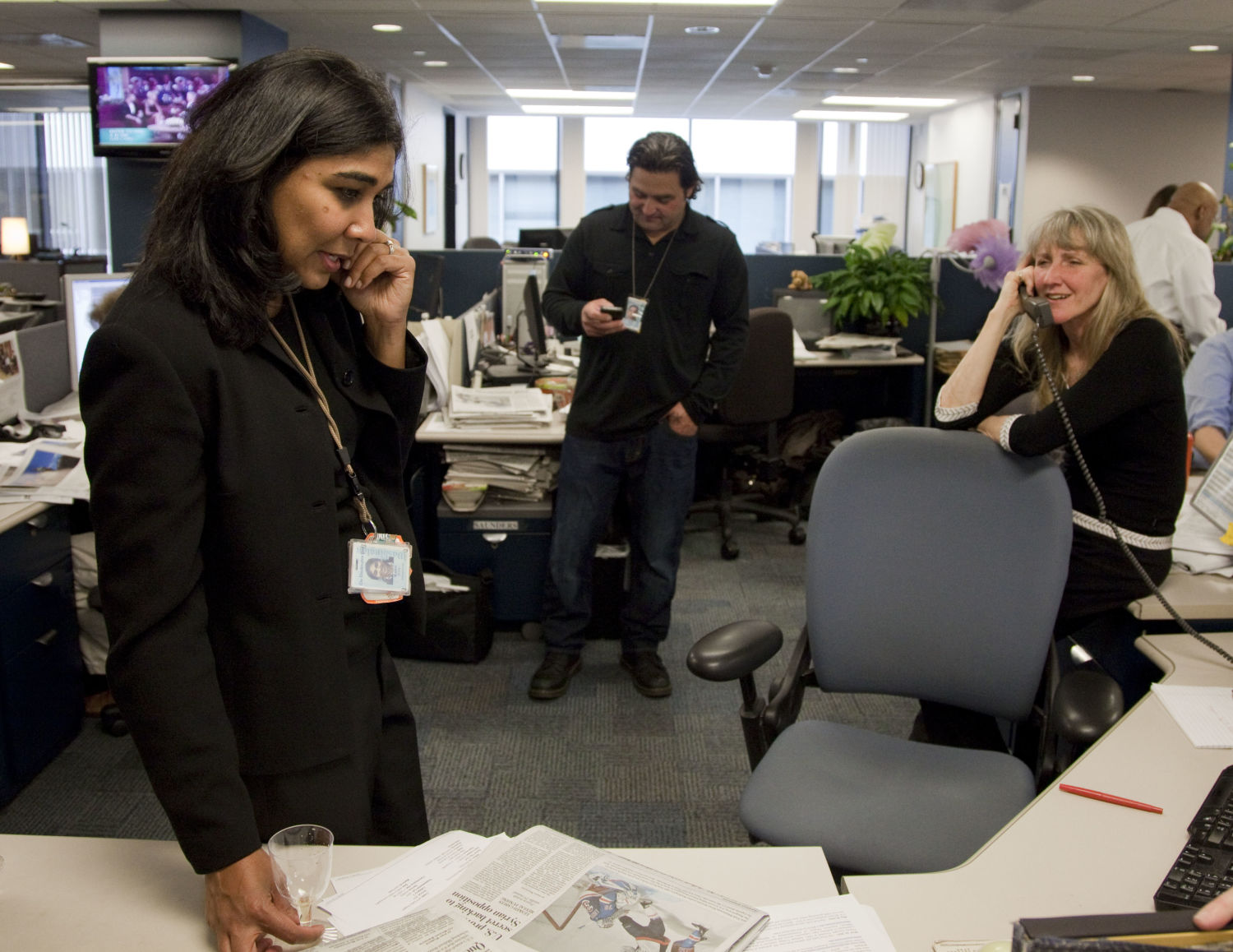I always have a rooting interest in the Pulitzer Prizes. It goes in this order:
- Me or one of my friends
- The Poynter-owned Tampa Bay Times
- A small newspaper, the smaller the better
We can predict that the prizes on Monday will include winners from the power conferences: The New York Times, The Washington Post, The Wall Street Journal, the Los Angeles Times and at least one wire service. Some big metro dailies will still step up, but not like they used to. The 2015 winners included papers in Houston, Buffalo, New York, Seattle and St. Louis. Good work, brothers and sisters.
If we define “small” or “smaller” as a circulation with less than 100,000, last year gave us two:
- The Post and Courier in Charleston, South Carolina, for public service, with a Sunday circulation of about 80,000.
- The Daily Breeze in Torrance, California, for local reporting, with a Sunday circulation of about 61,000.
That is great work from news organizations with shrinking financial resources and fewer editorial workers.
Jealousy and careerism aside, most journalists feel pride in the accomplishments of any Pulitzer Prize winner, but especially winners from small papers with limited means.
Let history be our guide. In 1953 the Gold Medal for Public Service went to two weekly newspapers in North Carolina, the Whiteville News Reporter and the Tabor City Tribune, with a combined circulation less than 7,000. The papers, led by Willard Cole and W. Horace Carter respectively, shared the prize. They had worked independently attacking the same evil: the night-riding terrorism of the Ku Klux Klan.
Roy J. Harris, Jr. writes in his book “Pulitzer Gold”: “The fears in the community were sometimes matched by fears in the newsroom. ‘I would be lying if I said I haven’t been afraid,’…Willard Cole said to Editor and Publisher, ‘but the mission of a newspaper editor is to voice convictions, not to exhibit his own misgivings.’”
Cole kept three guns for self-defense. Carter, only 32 years old at the time, “admitted being terrified for his wife and two young children as cars drove past his home at night.” His 4-year-old son asked him, ‘The Klan gonna come and get you, daddy?’”
The courage of these editors became a source of pride in the community as exhibited in a segment of the CBS television show “See It Now.” This 1953 report reveals what can happen when moral courage, physical courage and the exercise of journalism craft converge.
Great journalism, as we now know from the metaphorical film title, is like a spotlight that can reveal and disinfect the dark corners of society. A Pulitzer Prize is a spotlight, too, a big one, like the ones that used to crisscross the sky at Hollywood openings. The Pulitzer light shines on great journalism and magnifies it effects across the nation, sometimes across the globe. It would lead someone like Murrow to say at the end of his broadcast: “We suggest that if the fight against intolerance, bigotry, race prejudice, hatred and fear is to be won in this country, it must be won in the towns like the two we have seen here….”
There would be more brave journalists in small towns throughout the South who would fight that fight in the years to come. Just consider the editorialists who won Pulitzers in the South in the 1950s and 60s. Some, like Harry Ashmore and Ralph McGill, would lead and be sustained by larger newspapers in Arkansas and Atlanta. Then consider these heroes:
- Buford Boone, who won in 1957 for the Tuscaloosa (Alabama) News for editorials against mob violence against the integration of the University of Alabama. He would receive constant phone calls of intimidation through the night.
- Ira B. Harkey Jr., who won in 1963 for the Pascagoula (Mississippi) Chronicle for defense of the rule of law in the desegregation of Ole Miss. Bullets were fired into his office and he was forced to sell the newspaper and move out of state.
- Hazel Brannon Smith, who won in 1964 for the Lexington (Mississippi) Advertiser for work that spoke against violence and injustice. The White Citizens Councils, the Main Street version of the KKK, led boycotts against her and had her husband fired from his job. The Smiths were put into deep debt.
When Smith won her prize, she put it this way: “All we have done here is try to meet honestly the issues as they arose. We did not ask for, nor run from this fight with the White Citizens Councils. But we have given it all we have, nearly 10 years of our lives, loss of financial security and a big mortgage. We would do the same thing over if necessary….I could not call myself an editor if I had gone along with the Citizens Councils — feeling about them the way I do. My interest has been to print the truth and protect and defend the freedom of all Mississippians. It will continue.”
So in this the centennial year of the Pulitzer Prizes, let us declare a moratorium on weeping and gnashing of teeth over the economic woes of newspapers. Let no editor be overheard saying, “I once had 200 reporters to work with, now I only have 100.” Let any such lamentations be met with a quick trip through the history of Pulitzer Prizes devoted to social justice and equality.
Let’s offer a prayer of thanks to the Coles, Carters, Boones, Harkeys, and Smiths of the world who, for the cause of justice, and with tiny staffs, put their lives and livelihoods on the line.
If a small newspaper wins a Pulitzer on Monday, one of those voices cheering in the background will be mine.







